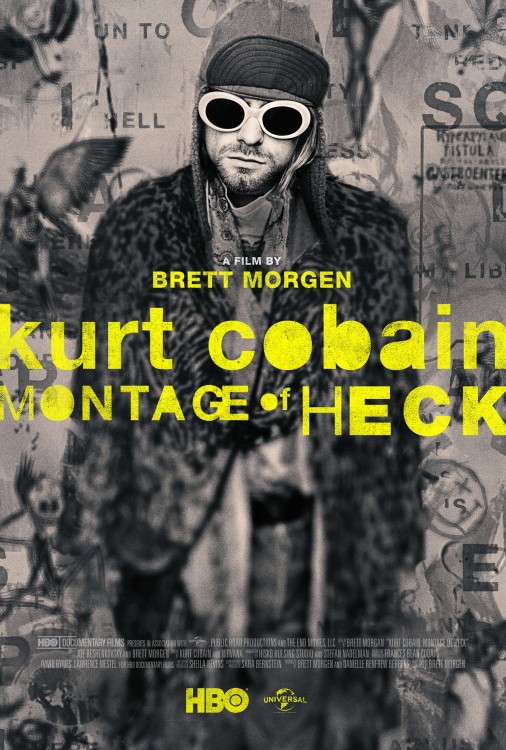 On Monday, May 4th, HBO unveiled a new documentary about the life and demise of tortured Nirvana frontman Kurt Cobain, directed by Brett Morgen. A quick trip to Wikipedia will tell you that this is the first documentary about the singer/guitarist to be made with the cooperation of the Cobain family. It’s currently streaming on HBO Go after debuting at the 2015 Sundance Film Festival.
On Monday, May 4th, HBO unveiled a new documentary about the life and demise of tortured Nirvana frontman Kurt Cobain, directed by Brett Morgen. A quick trip to Wikipedia will tell you that this is the first documentary about the singer/guitarist to be made with the cooperation of the Cobain family. It’s currently streaming on HBO Go after debuting at the 2015 Sundance Film Festival.
So, you’re probably wondering: should I watch this documentary?
Short answer: yes.
Long answer: Here’s why.
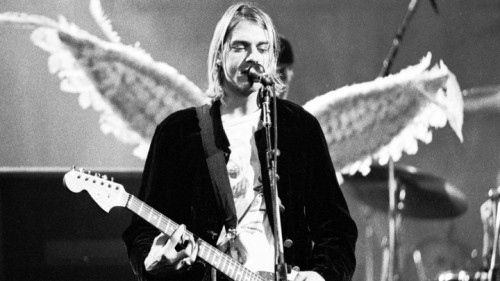 Have You Heard of Nirvana before?
Have You Heard of Nirvana before?
If you have, then watch it. If you haven’t, then you should, because this documentary serves as not only an excellent supplementary piece to the band’s legacy but also allows you to experience the band’s rise and collapse in the wake of Cobain’s suicide.
Do You Like Nirvana?
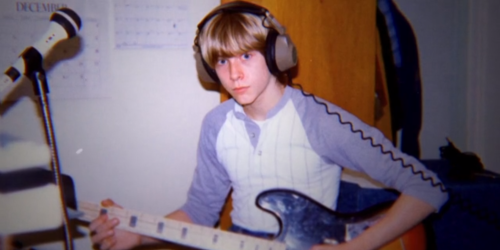 If you do, then you absolutely should. The documentary is liberally peppered with a wide mix of Nirvana songs, ranging from tracks from their debut record Bleach (“most people don’t own it”) through their landmark sophomore release Nevermind. In Utero, another well tracked masterpiece, is here too, as well as their climactic performance on MTV’s Unplugged in New York. This isn’t a greatest hits collage, though – the songs are used to help narrate the life of Cobain – as they should, because Nirvana’s catalog of songs features some of the most intense autobiographical songwriting of the 20th century.
If you do, then you absolutely should. The documentary is liberally peppered with a wide mix of Nirvana songs, ranging from tracks from their debut record Bleach (“most people don’t own it”) through their landmark sophomore release Nevermind. In Utero, another well tracked masterpiece, is here too, as well as their climactic performance on MTV’s Unplugged in New York. This isn’t a greatest hits collage, though – the songs are used to help narrate the life of Cobain – as they should, because Nirvana’s catalog of songs features some of the most intense autobiographical songwriting of the 20th century.
Nor are they featured chronologically. It’s impossible to talk about this documentary without first talking about the power, anger, and subtle beauty of the grunge band’s music, which are all heavily related to the singer’s views of the world. Home videos of a young, blonde Kurt are set to the haunting strains of their cover of “Oh, Me”. “Territorial Pissings” throws the documentary into gear at the beginning before being revisited at their Reading Festival performance. But Morgen doesn’t simply use the songs themselves as backing tracks. “Heart Shaped Box”, wildly underrated as one of the great love songs of the 90’s, is broken down and used as a backing melody at various points of the film, as are “Something in the Way” and “All Apologies”. The musical virtuosity of Nirvana often gets overlooked due to the sheer weight of Cobain’s personal legacy, which is a shame. At their peak, very few songwriters are able to rival the melodies and lines of much of Nirvana’s music.
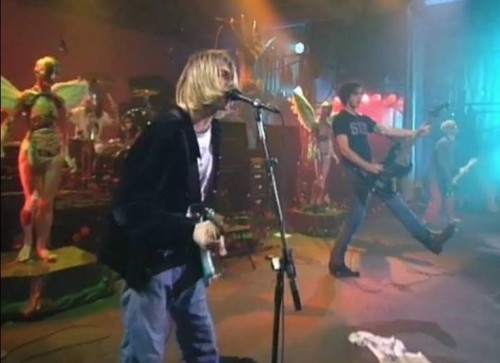 And then there’s the iconic “Smells Like Teen Spirit”, which better captures teen angst than anything else. The actual song isn’t heard until the credits (more on that later), but the melody of the chorus is featured throughout – it’s the song that, fair or unfair, defines the band, and its performance by a thrashing string quartet during Cobain’s turbulent adolescence is matched by a haunting performance by a children’s choir during the filming of the iconic music video. By the time you reach the end of the documentary, you remember just how revolutionary a song it actually is.
And then there’s the iconic “Smells Like Teen Spirit”, which better captures teen angst than anything else. The actual song isn’t heard until the credits (more on that later), but the melody of the chorus is featured throughout – it’s the song that, fair or unfair, defines the band, and its performance by a thrashing string quartet during Cobain’s turbulent adolescence is matched by a haunting performance by a children’s choir during the filming of the iconic music video. By the time you reach the end of the documentary, you remember just how revolutionary a song it actually is.
So yes, if you like Nirvana, see the fucking documentary.
Do You Like Documentaries?
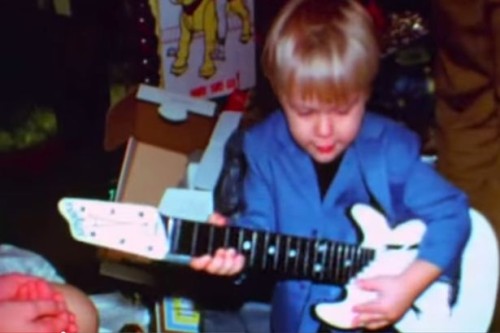 Morgen, a veteran of several boxing documentaries, doesn’t pull any punches here. He captures Cobain’s life in all of its frailties and rage. The beginning of the film lags a little as we recount childhood images of Kurt Cobain – it’s nothing that can’t be gathered by a reading of Charles Cross’s definitive biography Heavier Than Heaven. However, it’s accented by pairing these childhood videos with interviews with the haunted members of the Cobain family. After twenty years, the pain of losing Kurt sticks with his family – it’s particularly moving to see just how dazed and lost Kurt’s father, Don, and his ex-girlfriend, Tracy Marauder, seem after all these years.
Morgen, a veteran of several boxing documentaries, doesn’t pull any punches here. He captures Cobain’s life in all of its frailties and rage. The beginning of the film lags a little as we recount childhood images of Kurt Cobain – it’s nothing that can’t be gathered by a reading of Charles Cross’s definitive biography Heavier Than Heaven. However, it’s accented by pairing these childhood videos with interviews with the haunted members of the Cobain family. After twenty years, the pain of losing Kurt sticks with his family – it’s particularly moving to see just how dazed and lost Kurt’s father, Don, and his ex-girlfriend, Tracy Marauder, seem after all these years.
It also answers a potential question as to why this is the first licensed documentary – the pain of losing Kurt so obviously lingers after all these years. Only Krist Novoselic represents Nirvana (Dave Grohl did not participate in the film), and his stories about the band’s heyday carry with them all of the tragic hindsight that comes with realizing that your closest friend in the world was spelling out his grand tragedy right in front of his face. It’s almost an invasion of privacy to watch them spill out their souls on camera – and yet you can’t look away.
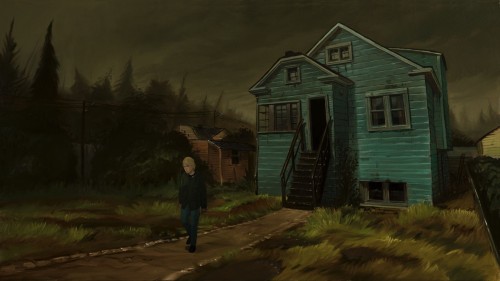 Morgen might as well share a director’s credit with Cobain – right from the beginning, a title screen states that this documentary consists of the art, music, audio recordings, video collages, and home movies of Kurt, and it surely does. Journal sketching are animated – Kurt had an obsession with the human body that borders on the obscene, and Morgen vividly illustrates the stuff of his nightmares. These are images that were seared into a pained soul’s eyes – the squeamish need not apply. The title of the film comes from a thirty-six minute musical collage that Cobain recorded in 1988, a collection of audio samples, droning, mutated sounds, demo-quality guitar work, and the haunting voice of the singer. Morgen samples that montage throughout the film, illustrating several animated scenes with moments both poignant and piercing. It’s almost soul-shaking to hear Cobain’s voice after all these years, preserved on 4-track audiotape.
Morgen might as well share a director’s credit with Cobain – right from the beginning, a title screen states that this documentary consists of the art, music, audio recordings, video collages, and home movies of Kurt, and it surely does. Journal sketching are animated – Kurt had an obsession with the human body that borders on the obscene, and Morgen vividly illustrates the stuff of his nightmares. These are images that were seared into a pained soul’s eyes – the squeamish need not apply. The title of the film comes from a thirty-six minute musical collage that Cobain recorded in 1988, a collection of audio samples, droning, mutated sounds, demo-quality guitar work, and the haunting voice of the singer. Morgen samples that montage throughout the film, illustrating several animated scenes with moments both poignant and piercing. It’s almost soul-shaking to hear Cobain’s voice after all these years, preserved on 4-track audiotape.
Once the film shifts into Cobain’s teenage years, it’s impossible to look away. Everything moves so fast that you can’t even think about what’s coming next even though this is a story that anyone with a mild interest in music knows by heart: boy plays music, boy finds success, success destroys boy. That Montage of Heck is able to make you forget what’s happened even for a second is a testament to its greatness. You almost find yourself rooting for this handsome, playful, blue-eyed man to overcome what was inevitable from the very start.
So yes, see the fucking documentary already.
Does the Legacy of Kurt Cobain as Both Man and Myth Intrigue You?
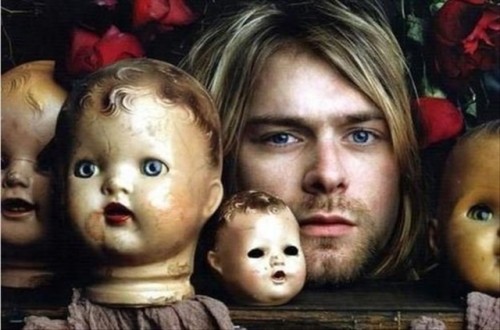 What most fascinates about this documentary is how it takes a man who long ago ascended into mythic status and humanizes him. By using Cobain’s journals and writings, we see the brilliance of the artist and musician – but by including moments such as recordings of early shows and home movies, we also see a regular dude in a band who just happened to fall into becoming the voice of a generation, something we know for a fact he never wanted.
What most fascinates about this documentary is how it takes a man who long ago ascended into mythic status and humanizes him. By using Cobain’s journals and writings, we see the brilliance of the artist and musician – but by including moments such as recordings of early shows and home movies, we also see a regular dude in a band who just happened to fall into becoming the voice of a generation, something we know for a fact he never wanted.
An early Nirvana practice is revealed – Novoselic jams away on bass as a drummer pounds away in the corner of a basement. It’s a scene anyone who’s ever been in a band will instantly recognize. And then there’s Kurt Cobain screaming away, his face inches away from a wall. He is at once every teenager who’s ever picked up a guitar – which is part of why Kurt’s demise is so tragic. He never wanted to be the idol for disaffected teenagers across America. He simply wanted to play in a band and to have a family.
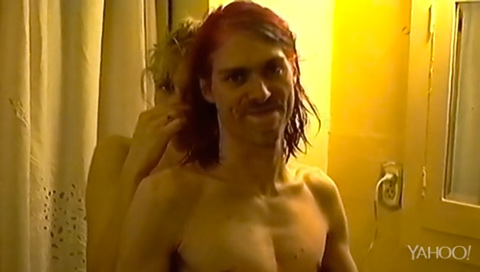 His relationship with Courtney Love is well represented as well, and these moments provide some of the most gut-punching instances of the film. (Not because of their violence and ability to shock: everyone knows that Cobain was a heroin addict, so Morgen tastefully avoids any images of Cobain physically shooting up. Only violent journal images showcase the pain, sorrow, and shame that comes with being a junkie.) At various times, we see Kurt and Courtney wrestling in their house. A long scene shows them cleaning up in the bathroom. As they discuss an upcoming newspaper article, Love towels her hair while Cobain shaves. It’s a scene out of any marriage, one that strikes home when you realize that Cobain could have had a happy life.
His relationship with Courtney Love is well represented as well, and these moments provide some of the most gut-punching instances of the film. (Not because of their violence and ability to shock: everyone knows that Cobain was a heroin addict, so Morgen tastefully avoids any images of Cobain physically shooting up. Only violent journal images showcase the pain, sorrow, and shame that comes with being a junkie.) At various times, we see Kurt and Courtney wrestling in their house. A long scene shows them cleaning up in the bathroom. As they discuss an upcoming newspaper article, Love towels her hair while Cobain shaves. It’s a scene out of any marriage, one that strikes home when you realize that Cobain could have had a happy life.
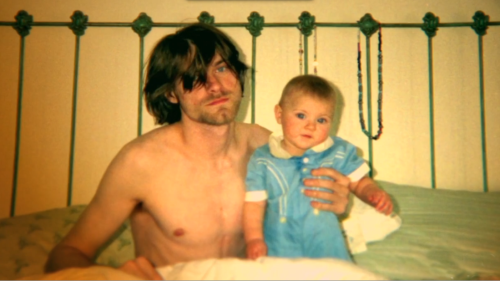 What hurts the most is seeing Cobain with his daughter, and realizing just how much he loved Frances Bean. (Frances also did not participate in the documentary as an interview subject – she was involved as an executive producer and in the editing process.) Had things turned out differently, Cobain would have gotten to live a life that millions of others take for granted – growing up with his family, watching her grow, and settling down into middle-aged adulthood.
What hurts the most is seeing Cobain with his daughter, and realizing just how much he loved Frances Bean. (Frances also did not participate in the documentary as an interview subject – she was involved as an executive producer and in the editing process.) Had things turned out differently, Cobain would have gotten to live a life that millions of others take for granted – growing up with his family, watching her grow, and settling down into middle-aged adulthood.
It’s Cobain’s mutated everyman status that poisons everything. Fame is always right around the corner, and much is made of the custody battle for Frances once it was revealed that Love used heroin at the time of her pregnancy. To their credit, no one offers any excuses for this behavior – it’s long since been beaten into fact by the culture of Nirvana. But when we see Cobain writhing on stage in front of thousands upon thousands of adoring fans, we remember that Kurt could never be – can never be – anything but a rock star. The collective unconsciousness of American culture has embodied in him too deeply the values and ethos of an entire generation. He is teen spirit.
As everything falls apart for Kurt, the documentary hones its knife carefully. Anyone with a working brain who has seen Unplugged in New York will instantly recognize the funereal atmosphere that it provides: Kurt was staging his own farewell to the world. Shortly after the last whispered notes of “All Apologies”, a few scattered journals drive the film into the final verse of Leadbelly’s “Where Did You Sleep Last Night?”. The film lingers from a side angle – unused in the telecast – of Cobain shivering into the microphone as the film fades to black. That final image, one of the most haunting moments in American music, fades to black as a second title card announces that Kurt killed himself in 1994 at the age of 27. All in all is all we are.
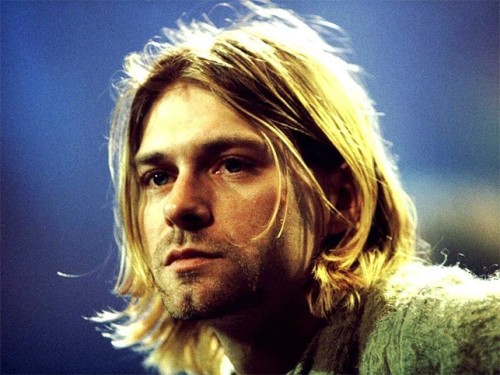 As the credits roll, “Smells Like Teen Spirit” starts up again, bringing everything full circle. Kurt no longer belongs to his divorced parents, to his tortured wife, or to his orphaned daughter. He is now part and parcel of the airways, a transcendental myth whose story will be told repeatedly as a scarred and twisted version of what happens when we get everything we always wanted and find out that it was too terrifying to bear.
As the credits roll, “Smells Like Teen Spirit” starts up again, bringing everything full circle. Kurt no longer belongs to his divorced parents, to his tortured wife, or to his orphaned daughter. He is now part and parcel of the airways, a transcendental myth whose story will be told repeatedly as a scarred and twisted version of what happens when we get everything we always wanted and find out that it was too terrifying to bear.
Morgen makes one final twist of the knife as the song reaches its final scream. As Cobain shouts into the nether, Morgen pulls back the rest of the band, leaving only the fragile, scratched, and tormented voice of a star, of a singer, of a human being, screaming into blackness. A denial. A denial. A denial. A denial.
Go see Montage of Heck.






Ummmmm… it’s Brett MorgEn. And anyone with a brain would know that “children’s choir” is Scala & Kolacny Brothers. Sloppy.
I’ve remedied the former – thank you for pointing out what somehow slipped by our two copy editors. Won’t defend that one – particularly since it’s in the poster.
As to the latter, well…you’re right. How the fuck did I miss that one? GOD I’M AN IDIOT.
As one of those people who did the copy edits, let me defend myself by saying that your comment is fucking ridiculous. A name got misspelled and we didn’t ID a children’s choir by name. Are those sloppy? Sure, I guess. But we’re also a non-professional blog run through mutual cooperation with no investment of compensation. So maybe find a better outlet for your pedantry, because it’s just making you look like an asshole here.